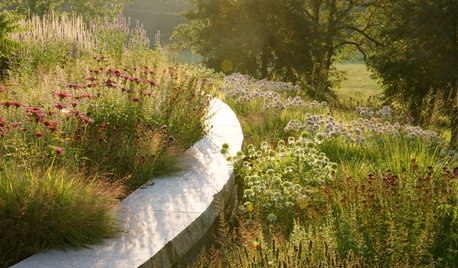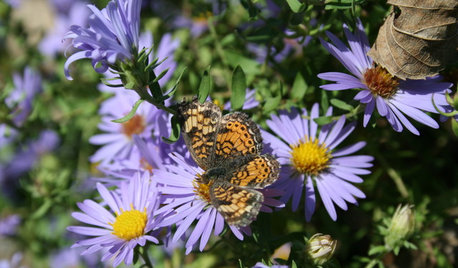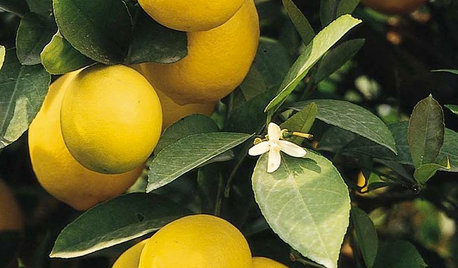Do blackberries need a support?
greenthumbnick
16 years ago
Featured Answer
Sort by:Oldest
Comments (24)
jellyman
16 years agogreenthumbnick
16 years agoRelated Discussions
do i need to winterize blackberries
Comments (3)if your zone 6 is like my zone 6, then you need to do nothing. This year you grew primocanes, next year they will send forth new growth and be floracanes (which means you get berries) I seem to get a windstorm each fall which tucks my leaves neatly into the beds I use for blackberries, raspberries and currants. I just leave (pun intended) well enough alone after that and I've not had any problems. ~Chills...See MoreDo you need extra floor support?
Comments (3)Very likely not necessary. I'm guessing your tub is cast iron, in which case when in use it weighs about twice as much as your range. Of course a rigorous analysis of such things includes many factors, including joist species & grade, dimensions, spacing, and span, as well as where on the span the load is resting (near the end of a span as in your case is good) and what other loads the joists in question are bearing....See MoreGrowing blackberries...
Comments (8)Yes, that is true, but it is more a problem replanting. You don't want to plant tomatoes where you grew tomatoes the year before either. So don't grow tomatoes and put raspberries there the next year. It's good to know these things, thanks for mentioning it. As long as you plant them next to each other and not together, I don't see it as an issue. And next year you will need to grow something else in the spots. Well you can leave the strawberries. My raspberries keep invading the strawberry bed which is right next to it. I would not grow caneberries there, but next to it? Sure. One does need to rotate crops. I do every year. With caneberries you can't, but I grow all mentioned right next to my caneberries. I just rotate them in 3 different beds. All next to my brambles....See MoreDo I need to add supports to this plant?
Comments (27)Ryan, don't take that leaf off unless the problem begins to spread. Spots and blemishes are quite common on leaves of all plants. There's really no way to know what caused it, and unless it spreads there's no reason to take off the entire leaf. If the black area is 'fuzzy' (not the leaf itself, many leaves are fuzzy), then it could be a mold. However, sunlight kills most black molds and fungi, so no need to worry too much. It looks like it's just a blemish, and nothing to worry about. :-)...See Morejellyman
16 years agogreenthumbnick
16 years agofruitgirl
16 years agogreenthumbnick
16 years agojellyman
16 years agopaulc_gardener
16 years agobarberberryfarm
16 years agogreenthumbnick
16 years agofruitgirl
16 years agogreenthumbnick
16 years agojellyman
16 years agofruitgirl
16 years agogreenthumbnick
16 years agofruitgirl
16 years agojim49631
16 years agomack1963
15 years agomrtexas
15 years agopappy_r
15 years agotworivers1
15 years agobillinpa
15 years agobillinpa
15 years ago
Related Stories

HEALTHY HOME12 Ways to Set Up Your Kitchen for Healthy Eating
Making smart food choices is easier when your kitchen is part of your support team
Full Story
INSPIRING GARDENSFrom Concrete Lot to Gracious Organic Garden in Seattle
Plants, pests and even weeds have a place in this landscape, which offers an edible bounty and a feast for the eyes
Full Story
GARDENING GUIDESGarden-Friendly Native Alternatives to Overplanted Exotics
There are lots of gorgeous, wildlife-friendly native plants ready to make an appearance in your garden
Full Story
GARDENING GUIDESYes, You Can Grow Food in a Shady Yard
Your shady garden doesn’t have to be forever barren. Berries, herbs and other shade-loving plants can produce a delicious bounty
Full Story
GARDENING GUIDES4 Ways Gardens Can Go Beyond Aesthetic Beauty
Our landscapes can play an even more meaningful role if we rethink their purpose
Full Story

FARM YOUR YARDHouzz Call: Home Farmers, Show Us Your Edible Gardens
We want to see where your tomatoes, summer squashes and beautiful berries are growing this summer
Full Story
GROUND COVERSGive Your Lawn a Taste of the Wild
Consider the joys of an irregularly trimmed meadow lawn: It’s ecofriendly, visually interesting and still good for romping
Full Story
GARDENING AND LANDSCAPINGGrow a Lush Privacy Screen
No need to wait forever for patio privacy the green way. These 10 ideas will get your screening up and running in no time
Full Story
CALIFORNIA GARDENINGCalifornia Gardener's February Checklist
Celebrate 5 California classics: plants that defy winter with bright flowers, luscious fragrance and, for some, delicious taste
Full Story



fruitgirl